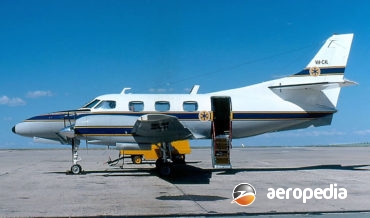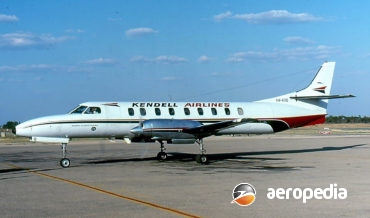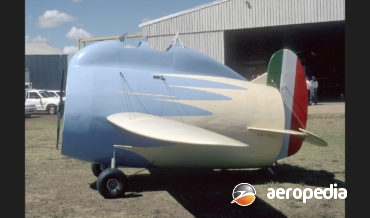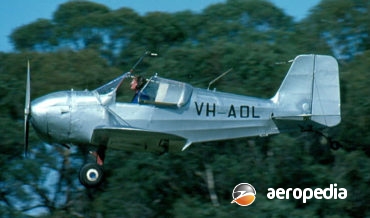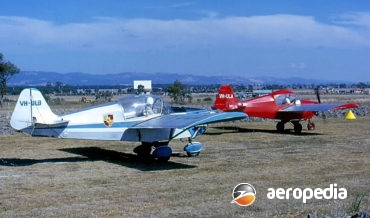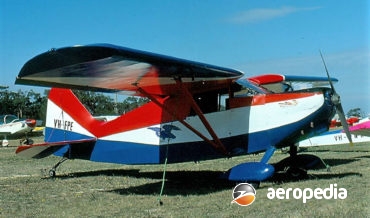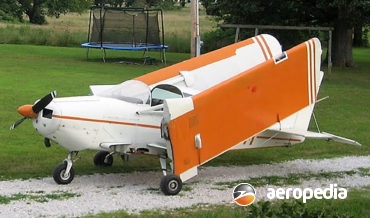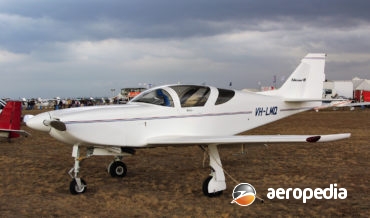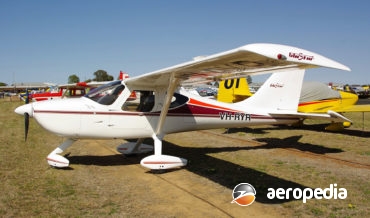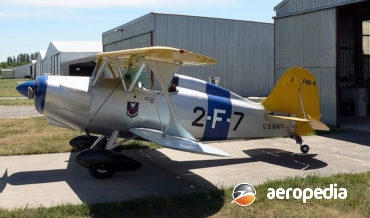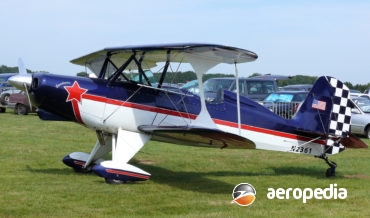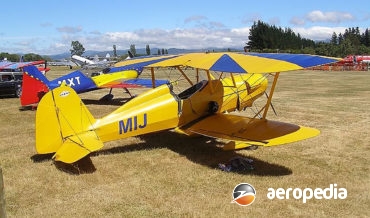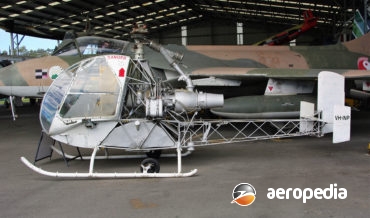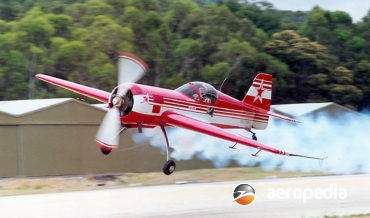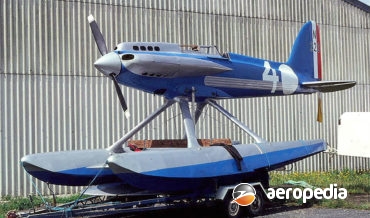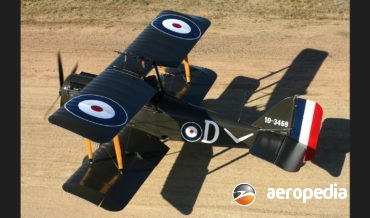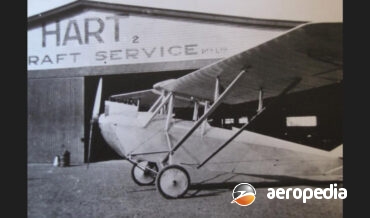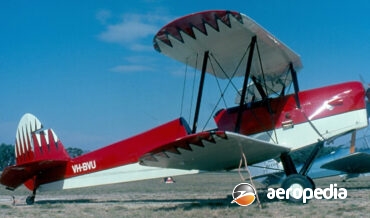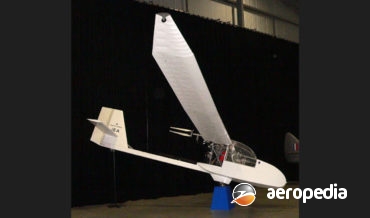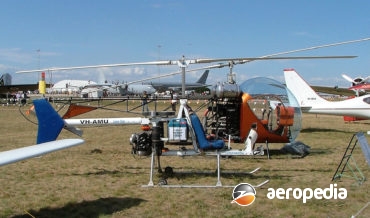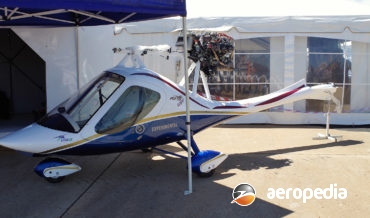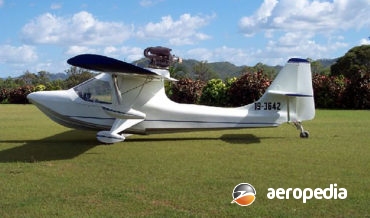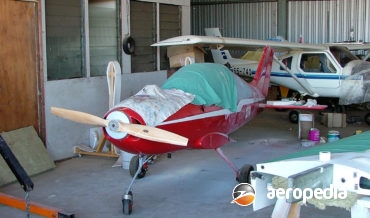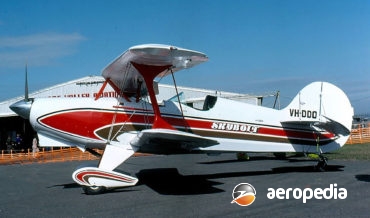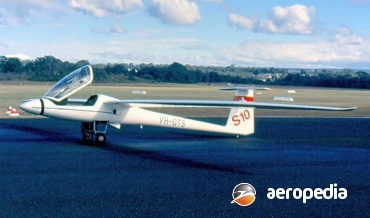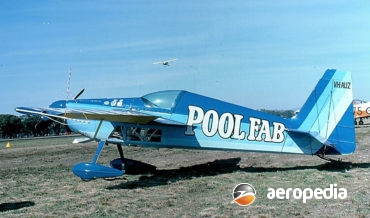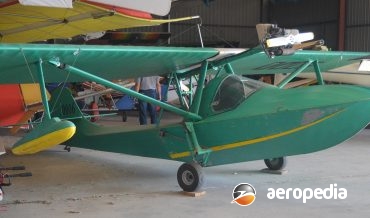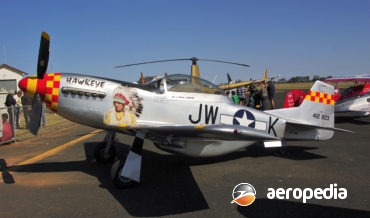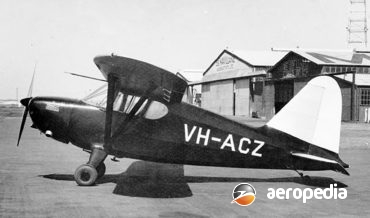David C. Eyre
The Merlin III is an eight/eleven seat executive transport designed by Ed Swearingen to offer an aircraft which can travel almost at jet speeds whilst consuming less than half the fuel that a jet business aircraft would require for the same distance.
David C. Eyre
- May 8, 2019
The Swearingen series of aircraft achieved prominence when a Merlin III won the 9,414 km (5,851 miles) trans-Atlantic London – Victoria (British Colombia) Air Race in 1971.
David C. Eyre
- May 8, 2019
Designed by Edward J Swearingen of San Antonio, Texas, the SX-300, when it was released, was described as the ultimate kit-built aircraft, being the fastest, the most expensive and the most complex to build.
David C. Eyre
- May 8, 2019
The Syndetta is a single-seat ultra-light aircraft of tubular steel construction with fabric covering designed and built by Joseph Kunovsky of Winston Hills, a suburb of Sydney, in the 1990s.
David C. Eyre
- May 8, 2019
In about 1932 an unusual aircraft was designed by Italy in Mr Luigi Stipa and built by Caproni, at one stage being claimed to be the first Italian jet-aircraft to fly.
David C. Eyre
- May 8, 2019
The prototype of the Playboy, the SA-3A, was designed by the well-known American light aircraft designer, Ray Stits.
David C. Eyre
- May 8, 2019
The Stits SA-5A of early 1955 was the first of the Flut-R-Bug series, this being a single-engine single-seat sporting aircraft designed around a converted Volkswagen four-cylinder powerplant.
David C. Eyre
- May 8, 2019
The first aircraft in the Skycoupe series, the SA-7, was not originally planned for production, but interest in the aircraft forced the designer, Ray Stits, to revise his plans.
David C. Eyre
- May 8, 2019
The Playmate was one of a series of designs of light aircraft produced by Raymond Stits in the United States, the SA-11 Playmate being produced in two variants, the SA-11A fitted with a 63-kw (85-hp) Continental C-85 engine, this being a single-seater; and the SA-11B being a two seater with
David C. Eyre
- May 8, 2019
The Glasair III is a dual, control aircraft developed for the home-built market by Stoddard Hamilton Aircraft of Arlington, Washington, as a more powerful version of the II series.
David C. Eyre
- May 8, 2019
Thomas Stoddard commenced development of a light aircraft in 1975 and set up a facility at the Cedar Grove Airport in Seattle.
David C. Eyre
- May 8, 2019
A further design by the Stoddard Hamilton organisation at Arlington, Washington, like the Glasair the GlaStar is produced in kit form and has become very popular, providing good performance on the power available.
David C. Eyre
- May 8, 2019
The GlaStar Sportsman, as it was initially known, has been described as the ideal small family, STOL go anywhere aeroplane.
David C. Eyre
- May 8, 2019
The Stolp SA-100 Starduster was designed by Louis Stolp in the United States as a single-seat light sporting biplane and was aimed at the popular sport aviation market in America at that time.
David C. Eyre
- May 8, 2019
The Starduster Too was designed by Louis Stolp and George Adamas for cross-country flying with an open cockpit and has been marketed by the Stolp Starduster Corp of Oroville, California, as a open sports plane for the amateur constructor.
David C. Eyre
- May 8, 2019
The SA-500, sometimes known as the Starlet, or the Sprite, is built and marketed by Stolp Starduster Corp in Oroville, California.
David C. Eyre
- May 8, 2019
The Acroduster Too is one of a series of light sporting aircraft produced by Stolp Starduster Corp of Oroville, California and is a fully aerobatic two-seat aircraft stressed to +9 and -9 G.
David C. Eyre
- May 8, 2019
In 1957 Louis Stolp and George Adams designed and built a light single-seat sporting biplane known as the Starduster, and subsequently marketed plans, components and basic materials to amateur constructors.
David C. Eyre
- May 8, 2019
Ernest J Strumey was born in 1890 in Singleton, NSW, In about 1912 he designed and built a pedal powered aircraft as part of his interest in aviation but this was not particularly successful.
David C. Eyre
- May 8, 2019
The Djinn was the first jet driven helicopter in the world, being designed by the Sud-Ouest concern which subsequently became part of Sud Aviation when the French aircraft industry was nationalised.
David C. Eyre
- May 8, 2019
In the early 1980s a programme was commenced in Moscow to develop a high performance aerobatic aircraft for competition.
David C. Eyre
- May 8, 2019
The 2/3 Spitfire, as it was initially known, has been produced by the Supermarine Aircraft Factory at Archerfield, QLD and was a fairly new foray into producing scale replicas of well known warbirds in Australasia.
David C. Eyre
- May 8, 2019
The Channel was built by the Supermarine Aviation Works Ltd at its Woolston facility at Southampton.
David C. Eyre
- May 8, 2019
The S-5 was one of a series of racing aircraft designed by R J Mitchell (designer of the Spitfire) in the 1920s, this aircraft being designed and built for the 1927 Schneider Trophy Race to replace the S-4 which crashed during trials.
David C. Eyre
- May 8, 2019
Squadron Aviation in Ohio in the United States produced a number of scale replicas of World War I fighters, including the Spad XIII, Fokker D-VII and the RAF SE-5a.
David C. Eyre
- May 8, 2019
In the 1930s David Staig, an automobile engineer from Surrey Hills in Melbourne, obtained a pilots licence and decided to build his own aircraft.
David C. Eyre
- May 8, 2019
The Stampe series of tandem two-seat primary training biplanes was designed by Count Stampe in Belgium, and manufactured by the Stampe-et-Vertongen concern in Belgium.
David C. Eyre
- May 8, 2019
The Sunbird was a motor glider or self-launched glider designed and constructed in New Zealand by Charles Stanton over a three year period from 1993, the machine utilising some parts from the American Eaglet ZK-GOE (c/n AACA/641) which Mr Stanton had previously owned.
David C. Eyre
- May 8, 2019
The GyroBee was designed by Ralph Taggart of the Michigan State University and made available as free documentation to interested builders, and in due course was produced in kit form by Star Bee Gyro of Worcester, Massachusetts for amateur builders.
David C. Eyre
- May 8, 2019
The Lonestar is a single-seat basic utility helicopter of all-metal construction marketed by Star Aviation Inc of New Braunfels in Texas, and is fitted with a 82-kw (110-hp) Hirth engine driving, via a chain, a composite main rotor.
David C. Eyre
- May 8, 2019
The Starfire Firebolt, a two-seat high-performance aerobatic biplane, also known as the Starfire Firebolt Convertible [convertible because the cockpit canopy can be quickly removed] and the MacKenzie Skybolt, was designed by G H McKenzie and was produced by Starfire Aviation of Tempe, Arizona and was produced in small numbers, nine
David C. Eyre
- May 8, 2019
Built in Brazil in South America, the Starfox V6 Super is one of a number of light aircraft produced for the light aircraft market and more than 2,300 examples are said to have been built.
David C. Eyre
- May 8, 2019
The Sea Eagle was designed and built by William “Bill” Starke of Townsville, QLD and was flown by him in the initial performance trials.
David C. Eyre
- May 8, 2019
The Starlite is a single-seat light sports aircraft designed by Mark Brown (who also designed the Aero Design Pulsar).
David C. Eyre
- May 8, 2019
Mr Lamar Steen designed the Skybolt with simplicity of construction as the main aim. A two-seat fully-aerobatic biplane, it was designed to be constructed by amateur constructors.
David C. Eyre
- May 8, 2019
Stemme GmbH & Co of Strausberg was formed in 1985 (in Berlin) to develop high performance gliders, and the prototype S-10 (D-KKST) was flown for the first time on 6 July 1986.
David C. Eyre
- May 8, 2019
The Akro was designed by Mr C L Stephens in the USA specifically for amateur constructors who wished to take part in competitive aerobatics.
David C. Eyre
- May 8, 2019
The Sea Hawk was designed by Mr J Stevens in Queensland for the ultra-light amateur-built market and is the culmination of a number of designs he has produced and built over the years.
David C. Eyre
- May 8, 2019
The Stewart S-51D is a 70-percent scale replica of the North American P-51D Mustang fighter aircraft of World War II and was introduced to the market in 1994 as a fully-aerobatic, high performance, accurate reproduction of the P-51D Mustang.
David C. Eyre
- May 8, 2019
The Model 105, also known initially as the HW-75, was introduced to the range of aircraft produced by the Stinson Aircraft Division of the Aviation Manufacturing Corporation in April 1939.
David C. Eyre
- May 8, 2019
Recent Comments
Archives
Categories
- No categories
Categories
- No categories
Latest Posts
Newsletter

